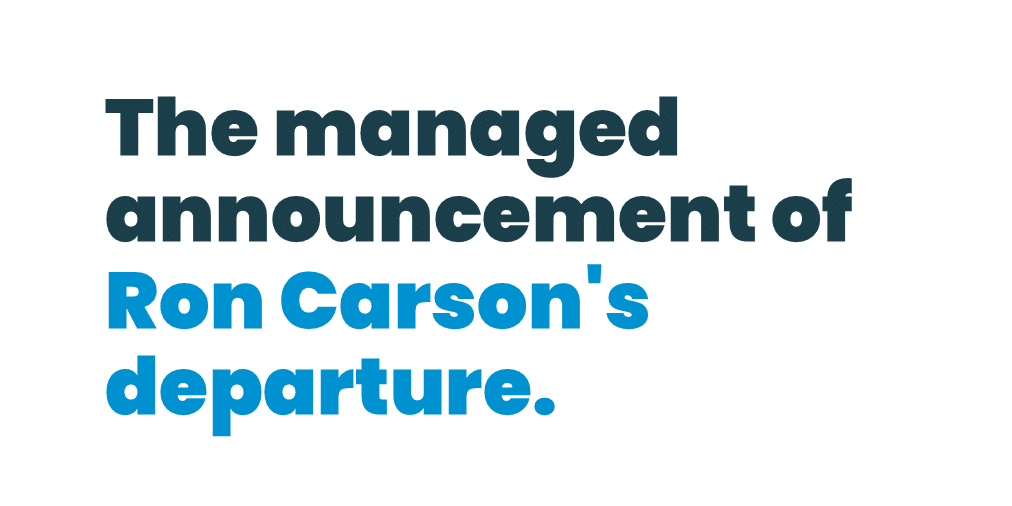
The news embargo: a real-time case study
On Tuesday Barron’s broke the story about Ron Carson, the founder of the Omaha-based RIA Carson Group, stepping down from his CEO role. Carson posted a video to LinkedIn that he had recorded a week earlier, announcing he had shared his story with Barron’s on embargo. While he went on to discuss his plans to focus on conscious capitalism and perfect the ultimate human experience, he isn’t going far. He’ll remain as chairman and retain a majority stake in Carson. The story featured a joint interview with Carson and his successor, Burt White.
Barron’s story posted slightly before the company released the news on PR Newswire. Financial Planning, ThinkAdvisor, WealthManagement, Citywire and others quickly posted the news, most largely pulling from the firm’s official news release.
From a PR perspective, interest in Carson is not surprising. He’s been a colorful and prominent personality in the investment industry. But the news provides an interesting case study in how to manage a major announcement.
In his LinkedIn announcement, Carson says he gave the story on an exclusive embargo to Barron’s. This is not a surprising choice given research data that shows that Barron’s is well read by advisors. Over the last few years, the publication has built a strong niche serving the RIA/advisor community with Barron’s Advisor.
Is it a retirement? Carson’s release and the interview he gave to Barron’s were careful not to use the word “retirement.” When negotiating the embargo, Carson may have also specifically stipulated that this was not a retirement announcement.
Sharing a story on embargo can be an effective strategy as it allows the news organization a little more time to write a thorough story and interview spokespeople without the pressure to publish the story before others do. The news organization likes the embargo because it allows them to get the story first. When pursuing an embargo, most organizations will select a news organization or a reporter that they trust, or they feel will cover their news in the best light.
But there’s a risk to an embargo: Other news organizations may not write as much about your story or might even skip the story altogether because it has already been covered. If you’ve got good relationships with a wide group of reporters, there can be some ill will generated when such a prominent story is given to just one news organization.
"But there’s a risk to an embargo: Other news organizations may not write as much about your story or might even skip the story altogether."
In Carson’s case, it didn’t seem to be a problem as most of the other major news outlets picked it up, including the carefully curated quotes from his firm’s news release.
The non-exclusive embargo
Embargoed stories don’t have to be exclusive. Embargoing a story can be a tool to give reporters a little more time to cover a more complicated story. For example, we’ve embargoed news with a small group of experienced reporters to cover a detailed research report or a complicated study. The embargo gives these reporters time to read a long report, ask questions and produce a more thoughtful story—again without having to rush to beat other news organizations.
Embargoes are very common in technology and investment product launches. Most ETF launch day coverage is a result of embargoes. (See related post on marketing ETFs.)
While embargoing is common, it shouldn’t be overused. Embargoing routine announcements can cause a major eyeroll on the part of media. Most reporters will agree to look at a release on embargo without promising to cover it until they’ve read the news and feel like it is worthy of their publication.
Embargo carefully. When you are a colorful player like Ron Carson, most news organizations want to cover your story. Lesser known companies or less newsworthy scoops might not get as much attention for their embargoed news.
Lowe Group offers a range of media relations services. Send us a note to learn more.
Subscribe.
Receive the latest news and insights from Lowe Group.